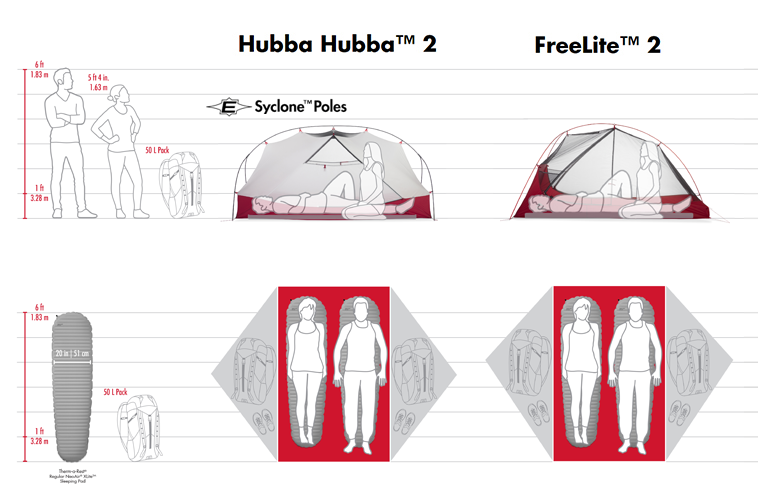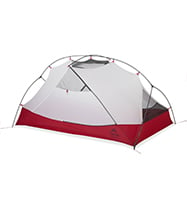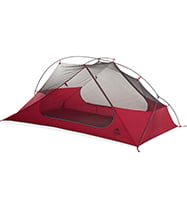Hubba Hubba vs. FreeLite: Which Backpacking Tent is Right for You?
All MSR tents are engineered and built to stringent standards of quality and performance. With decades of tent design under our belts, we can say with confidence that you can’t go wrong with any MSR tent, as long as you get the one that’s built for your needs. We offer numerous options within each category of tent, dialed in for specific users who demand certain things, and our backpacking tents are a great example of this variety.
Whether you’re choosing your first backpacking tent or your tenth, the trick is knowing what you need in a tent. Answering a few simple questions can help narrow down the specs and features you should look for.
If you’re here, you know you want a tent for backpacking, so let’s break down the Hubba Hubba™ 2 and the FreeLite™ 2–two of our most popular backpacking tents. We’ll cover the similarities, then get into what sets these shelters apart (which will ultimately determine which one is your glass slipper, so to speak).

Hubba Hubba vs. FreeLite: How are they similar?
The Hubba Hubba and the FreeLite were both designed for backpackers and adventurers who love to get out and explore from spring through fall. Available in 1, 2, and 3-person models, these three-season tents both feature a DuraShield® waterproof coating to protect against the weather, and rainflies with StayDry™ rain gutters to prevent water from running down on you when you open the vestibule door.
They also both share true rectangular floor plans to maximize interior space and prevent sleeping pad overlap, unlike other brands whose tents taper at the foot end. Both tents also have interior storage pockets with cable ports, so you can organize charging cables or headphones, and overhead storage pockets for headlamps or other small items.
How are they different?
Though both the Hubba Hubba and the FreeLite were made for backpacking, there are important differences between the two models that will help you choose the one for you. For comparison’s sake, we’ll focus on the 2-person versions.
The Weight
Weight is often the first spec people compare between tent options, though it only tells a fraction of the story. The Hubba Hubba, with more fabric, poles and livable space, weighs in heavier than the trimmed down FreeLite.
Hubba Hubba 2
- Minimum weight = 2 lbs. 14 oz
- Packaged weight = 3 lbs. 4 oz
FreeLite 2
- Minimum weight = 2 lbs.
- Packaged weight = 2 lbs. 5 oz
Learn more about minimum and packaged weight.
What’s truly important is what you get for the weight difference, and if you want a more spacious camp experience or prefer less weight on your back.
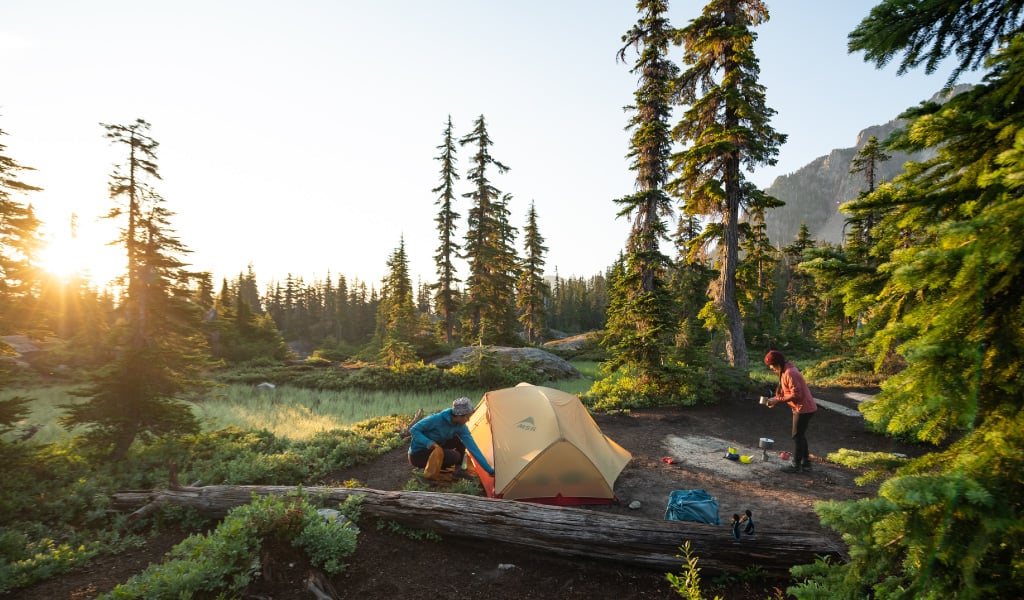
The Setup
If you’re a newer backpacker, you may not know the difference between a freestanding tent and a semi-freestanding one.
Freestanding
Tent poles are designed to create structure for the entire tent body; stakes are not needed for the tent to stand fully erect. This is the most common style of backpacking tent.
Semi-freestanding
Tent poles provide structure for part of the tent body, but stakes are required to complete tent body setup by tensioning out one end of the tent (generally the foot end). This design is generally lighter weight but can be slightly more involved to set up.
The Hubba Hubba is a freestanding tent, so the poles provide all the necessary framework for the tent body. This makes setup incredibly quick and easy; simply pop the poles into the four grommets at each corner of the tent, clip the tent body to the poles and you’re essentially done. Stakes are useful for keeping the tent in place in case of wind, but if you can’t find ground that allows all corners to be staked out, it’s not a deal-breaker.
The FreeLite is a semi-freestanding tent. This means the two foot-end corners of the tent body must be staked out to create the structure of the tent. A semi-freestanding design shaves weight, but it also means you have to find a campsite that can accommodate the stake placement required for the tent’s size.
Once you are used to setting up a semi-freestanding tent, you can have the tent up just as fast as a freestanding tent, but newer users may find it a bit fussier at first.
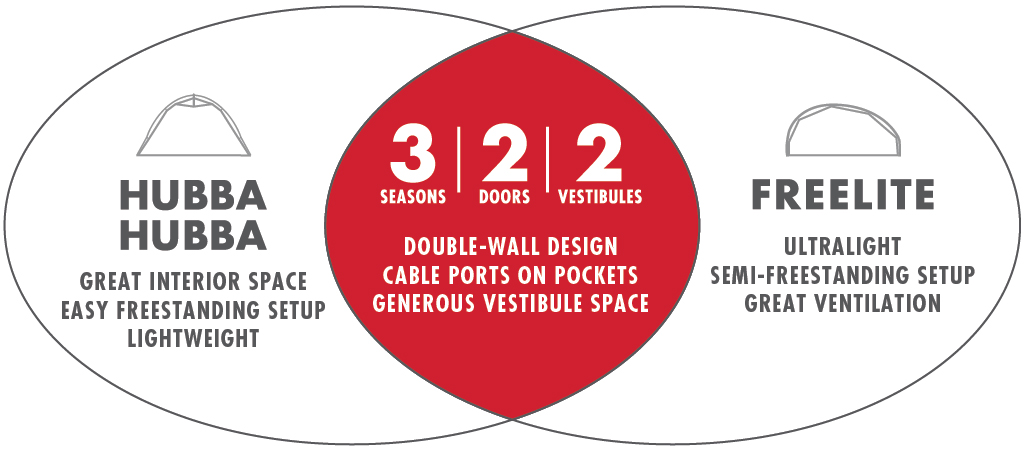
The Tent Body
The tent body designs of the Hubba Hubba and the FreeLite are very different.
The Hubba features more solid fabric to keep in warmth and add privacy in case you want the option of leaving off the fly on dry nights. Mesh at the head, foot and sides allows moisture to vent out, and there is a mesh ceiling panel so you can stargaze on clear evenings.
The FreeLite tent body by contrast is nearly all mesh, with a large solid panel at the head of the tent where the rainfly cuts away for weather protection. This mesh body shaves weight and provides exceptional ventilation while protecting you from pesky bugs.
The Livable Space
Though the floor area of the Hubba and the FreeLite are both 29 square feet, the full interior of the Hubba is larger due to more vertical walls that increase the overhead and shoulder space. The interior peak height (the tallest point) of the Hubba is 40 inches versus the FreeLite at 39, but that number doesn’t capture the difference in the tent silhouettes, as seen in the graphic above. With fewer poles to create structure for the tent body, the FreeLite walls and centerline slope much more dramatically, particularly on the foot end. Thus, a tall person will have a bit less overhead room throughout the FreeLite.
The Durability
A tent’s durability is dictated by its fabric and poles. Tent fabric weight is measured in denier, with higher numbers indicating thicker, more durable fabric (though it’s not quite that simple; read this to learn more). Pole material and design will help determine strength, wind resistance and overall weight.
The Hubba Hubba, designed for backpackers who don’t mind a bit more weight, features 20D ripstop nylon. This fabric is a nice middle ground between weight and durability. The FreeLite, made for those focused on minimal pack weights, is crafted from 15D ripstop nylon which prioritizes less weight over increased durability. Though still tough, this material should be treated with a touch more care than the Hubba fabric.
Tent poles are made from a variety of materials. The Hubba has Easton® Syclone™ poles which are constructed of aerospace composite materials, making them virtually indestructible in challenging and windy conditions. The pole structure of the Hubba also adds stability and strength in wind, making it the better choice in stormy weather. The FreeLite has DAC® NFL poles, made from strong, ultralight aluminum that shaves weight while still providing durable performance. The pole structure of the FreeLite, which minimizes the number of poles with its semi-freestanding design, is still strong in bad weather, but may not stand up to intense wind as well as the Hubba.
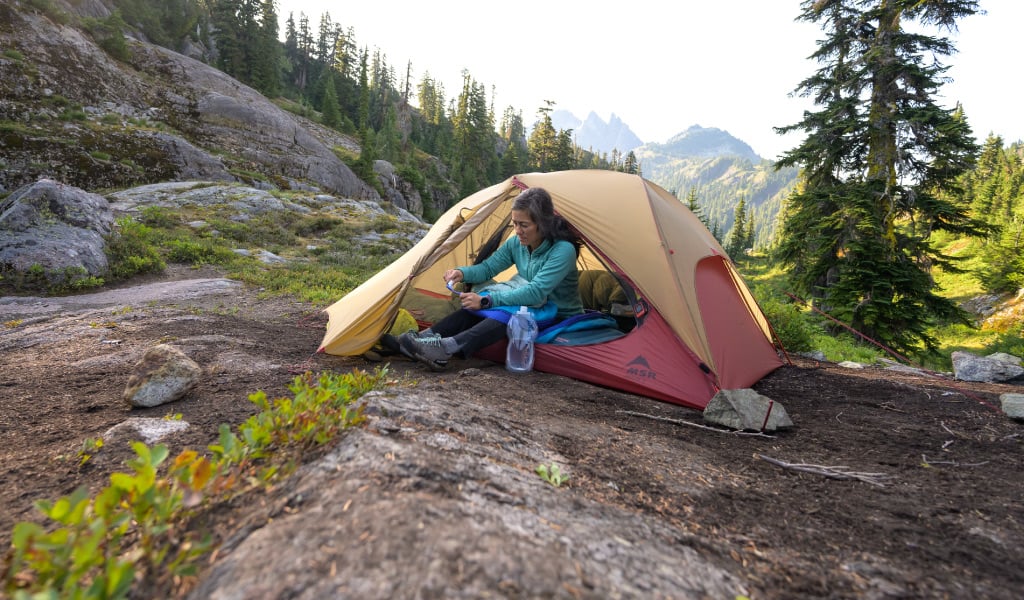
The Bottom Line
If you are an outdoors person who wants your shelter to be as versatile as possible in as many scenarios as possible, choose the Hubba Hubba. Its exceptional weight-to-space, ease of setup and weather resistance make it well suited to all kinds of adventures, from weekend backpacking trips to national park road trips. With the right sleep setup, you can even push the three-season Hubba into gentle winter conditions.
If pack weight is more important to you than living space or extended three-season protection, choose the FreeLite. While it is still quite livable and provides good weather resistance, the thoughtful design mainly focuses on reducing weight. When you’re putting in the miles on a mountain mission, you’ll appreciate fewer ounces, but once you reach camp, you’ll enjoy the features the FreeLite has that make its (minimal) weight worth carrying.
Related Posts:
- MSR Hubba Hubba 2 vs. Elixir 2
- How to Choose the Best Backpacking Tent
- The Ultimate Guide to MSR Tents
 Ashley Brown
Ashley Brown

